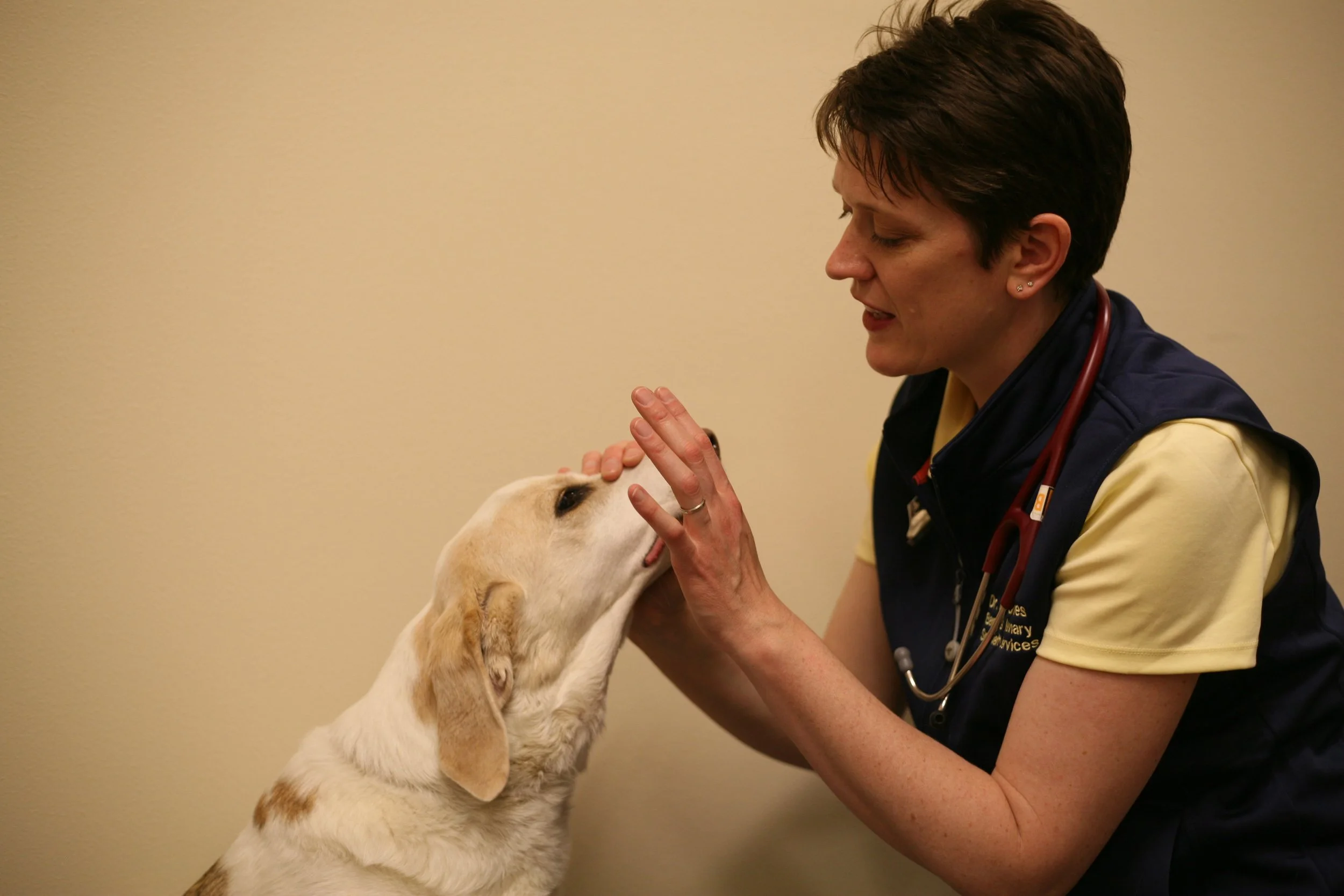An interesting case report came across my desk awhile ago so I thought I might share some key points with you this week. (Green L, Cook L, et al. Distemper encephalomyelitis Presenting with Lower Motor Neuron Signs in a Young Dog. JAAH 2020)
Signalment: 4 month old spayed female dog
History: The puppy was presented to the neurology service with a several day history of right thoracic limb monoparesis. Key findings in the neurologic examination included axial pain on palpation, thoracic limb lameness, weak withdrawal of the affected limb and a paw replacement deficit in that limb. Absent cutaneous trunci reflex was also noted on the right side. Other than the neurologic findings, the only other interesting finding on physical examination was a mildly febrile state of 102.7F) and crusting of the foot pads.
She was initially managed conservatively however signs progressed to inappropriate mentation which was suspected to be due to the fentanyl patch. This was removed and signs improved however the clients elected to proceed with additional testing at that time.
Neuroanatomic lesion localization? You tell me!! (see below when ready)
Differential diagnoses listed at this time included non-infectious inflammatory conditions (MUE), infectious meningomyelitis, and hemorrhage or trauma.
Diagnostic testing
Spinal MRI: Abnormalities in the central spinal cord
Brain MRI: Unremarkable
CSF: Mild pleocytosis cell count 10/ul: reference < 5/ul) with normal protein and RBC.
Infectious disease testing: Neospora IFA was negative however the Toxoplasma IgG was markedly elevated with a borderline IgM. Parvovirus testing and cryptococcus antigen testing was negative. PCR on CSF for distemper (CDV) was positive. A whole lot of other infectious diseases were tested for, and negative.
Treatment with clindamycin, sucralfate, gabapentin, tramadol, famotidine, metronidazole and a single dose of dexamethasone was started.
Progression: She was discharged 4 days later, but returned due to progressive mentation changes and worsening ambulation. During evaluation she had a focal seizure. (Now we have multifocal neuroanatomic lesion localization!). She was humanely euthanized and submitted for necropsy.
Necropsy: Findings consistent with CDV were found and in addition, immunohistochemistry of the C5 and lumbar spinal cord and strong nuclear and cytoplasmic brown staining for CDV and no staining for Toxoplasma.
What is so noteworthy about this case?
She was partially vaccinated. Did you know that 40% of dogs with confirmed distemper infection, in one study, were vaccinated? (Tipold A: 1995).
She had hyperesthesia associated with her neurologic signs. Pain is a very unusual finding for a distemper case and the authors suggest this is the first case report of confirmed CDV in a dog with limb pain.
The progression from limb to brain is unusual but not unreported.
Take Home Message
A young dog, with multifocal neurologic findings, or findings of spinal pain in conjunction with neurologic findings, may have CDV. I suggest adding this disease to your ever-growing-list of infectious diseases that can cause spinal pain in dogs.
Neuroanatomic lesion localization answer: C6-T2 radiculopathy or neuropathy. There is no evidence of spinal cord involvement initially so a myelopathy is less likely.
As always, thanks for reading! I hope you have a NON-PAINFUL week, that isn't LAME! (Sorry...I just couldn't help myself.)



